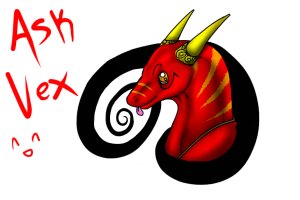Eh. Bored.
Here are the Building Crunchers, also called Gantos, a species in Hiatus. Yes, they are giant and they eat buildings, because the story takes place in the ruins of New York City. Like Sprinting Arrows, which are really just mutant raptors, Gantos were brought to Earth during the Falling Era through black holes, repopulated, and adjusted to the new environment. While Sprinting Arrows are more directly responsible for the extinction of the human species, Gantos also as their accidental share of humanity's collapse by eating buildings. In their home dimension, Gantos live in a world full of huge towering mountains and cliffs, full of minerals which they rely on. On Earth, however, they adjusted to instead eating skyscrapers and living in cities, settlements, and mountain ranges.
Gantos are giant reptiles, yet have some genetics of canines. Males have horns, and females do not. In size, they are about as tall as the average skyscraper, and eggs are as big as an apartment in a hotel. While they are carbon-based life forms, because their diet consists of so much rock and so little water, it takes a long time for them to decompose once they die, allowing Sprinting Arrows to greatly benefit from eating their long-lasting carcasses.
They were given the name "Building Crunchers" because, derp, they eat buildings. It is clear that Gantos usually prefer stone-made buildings instead of ones made of wood. Because they are so large, they only live about 50 years, and most of that time is spent growing up; only about 20 years in adulthood. They are covered in sand-colored scales (naturally they are green, brown, and cyan-blue, but like chameleons they evolved to blend in to their habitat) and some still maintain their original shades somewhat. They have yellow-colored manes along their spine, thicker behind their head and on their tail.
Forum rules
Reminder: Copying another person's art without permission to reproduce their work is a form of art-theft!
Click here to see the full Art Rules!
Need help using the Oekaki? Check out this Guide to the Oekaki!
Reminder: Copying another person's art without permission to reproduce their work is a form of art-theft!
Click here to see the full Art Rules!
Need help using the Oekaki? Check out this Guide to the Oekaki!
Random Species Sketches by Peaceful_Chaos
| Based on | Click to view |
| Artist | Peaceful_Chaos [gallery] |
| Time spent | 12 minutes |
| Drawing sessions | 1 |
| 2 people like this | Log in to vote for this drawing |
1 post
• Page 1 of 1
-

Peaceful_Chaos - Posts: 4671
- Joined: Fri Aug 26, 2011 12:03 pm
- My pets
- My items
- My wishlist
- My gallery
- My scenes
- My dressups
- Trade with me
1 post
• Page 1 of 1
Who is online
Users browsing this forum: No registered users and 31 guests






